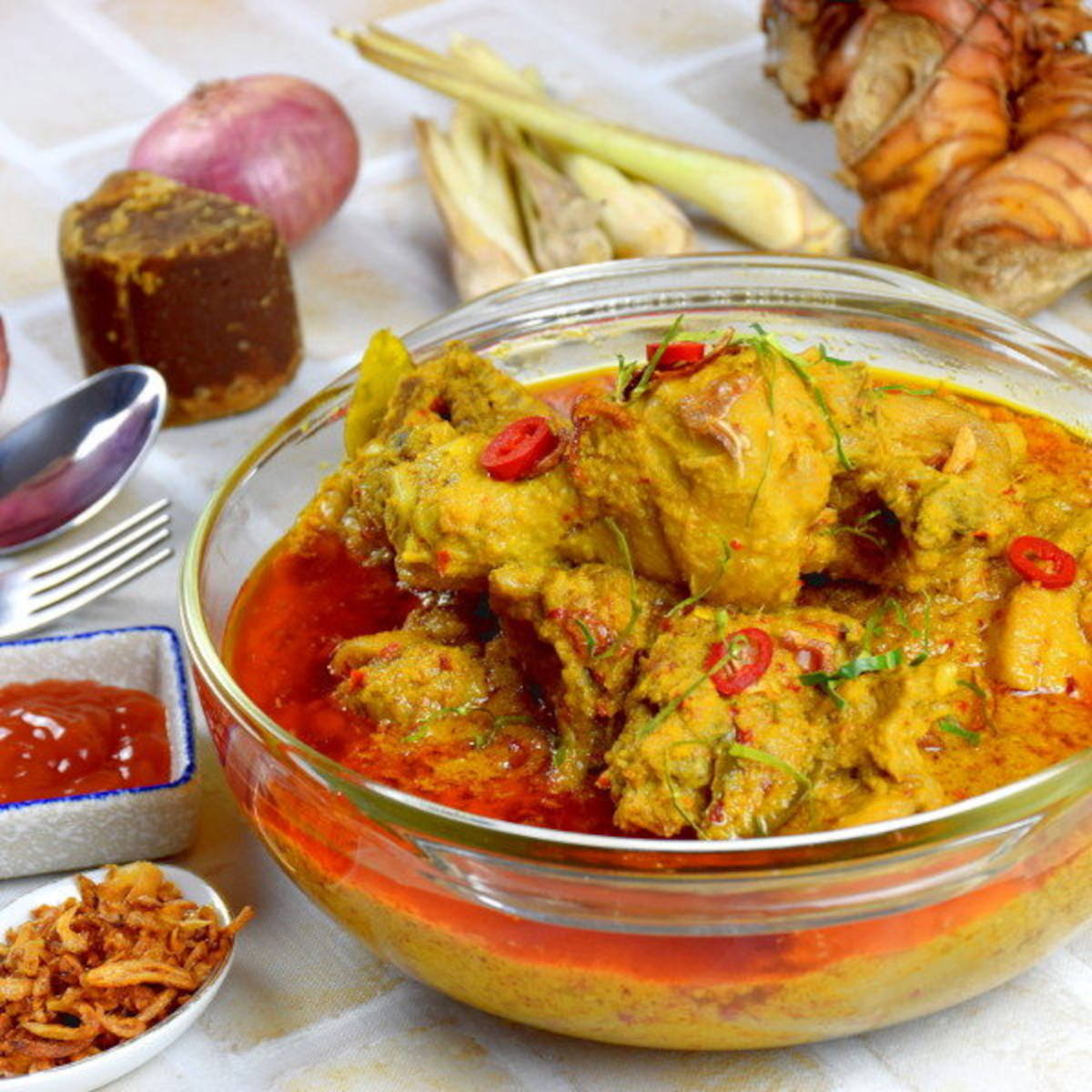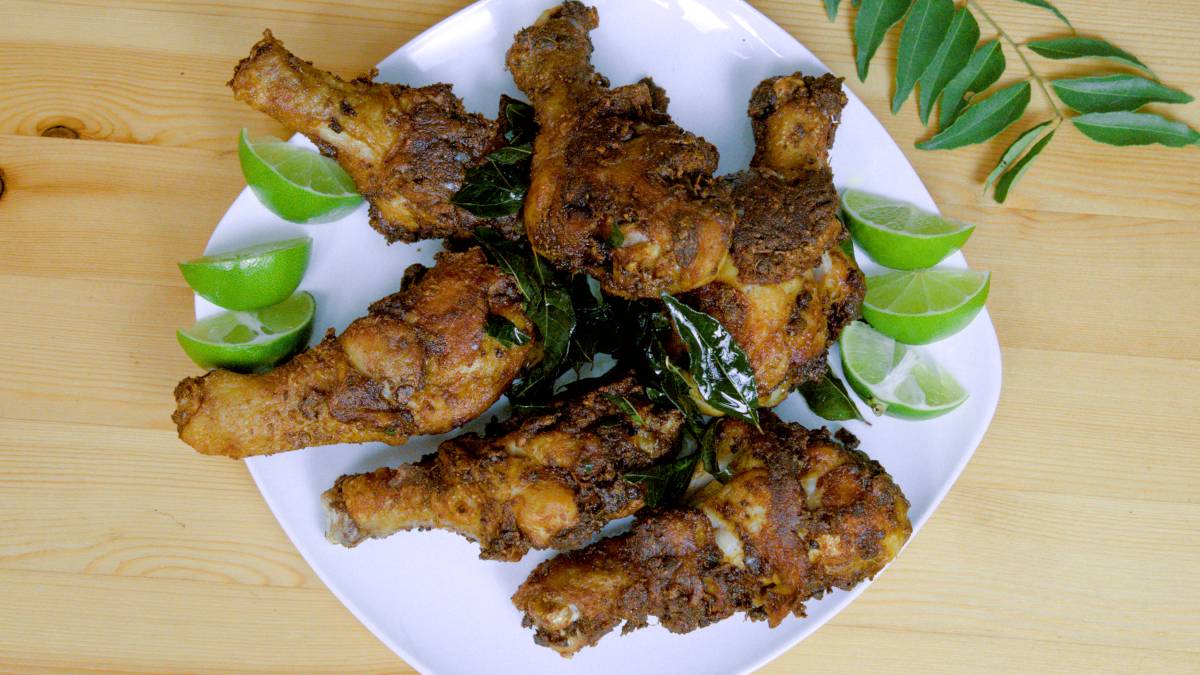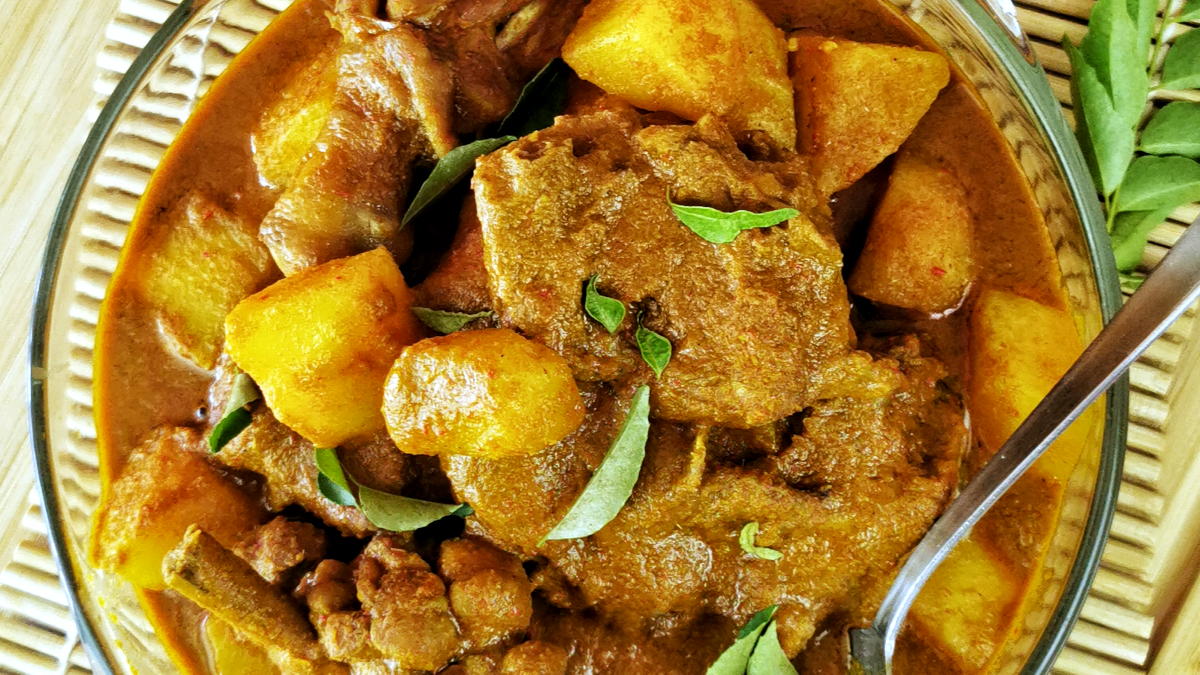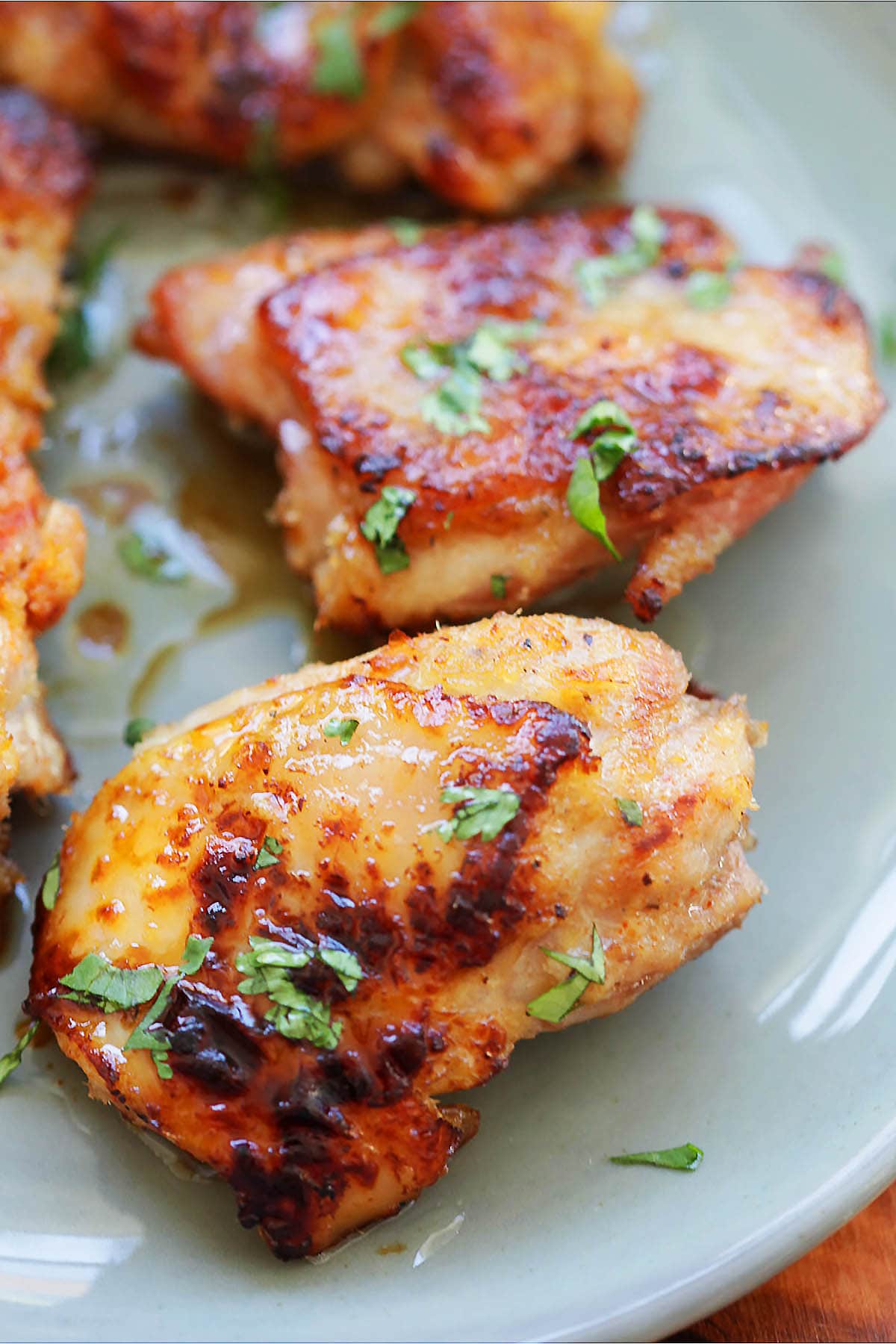Kapitan chicken, also known as Ayam Kapitan in Malay, is an authentic Nyonya chicken curry that beautifully merges the rich culinary traditions of Malay and Chinese cultures. This dish is recognized as the mildest Malaysian curry, making it perfect for those who prefer to avoid the intense heat of spicier curries.
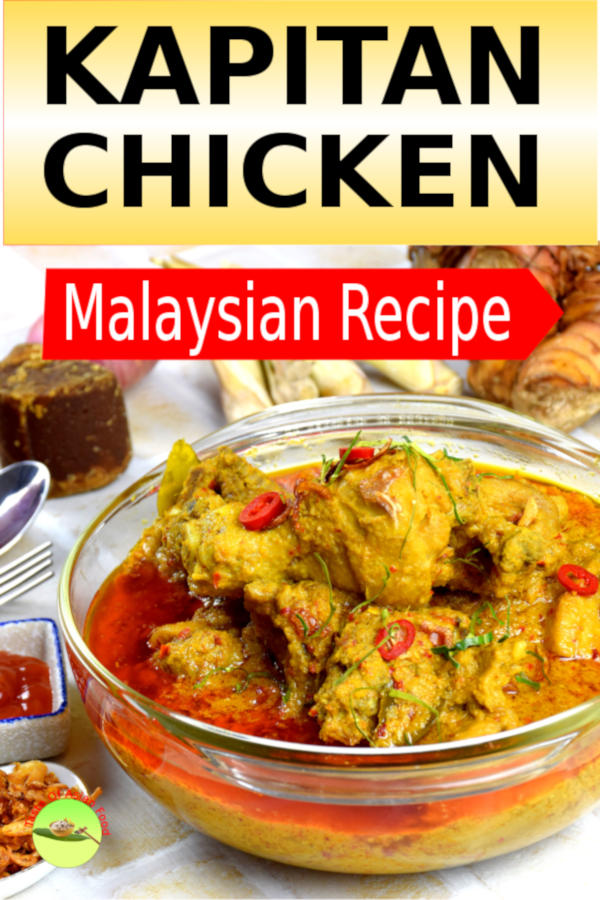
Key Ingredients Required to Prepare Kapitan Chicken
- Chicken: Bone-in, skin-on chicken pieces are recommended for this recipe as the bones enhance the flavor during cooking. If you prefer boneless chicken, consider substituting part of the water with chicken broth for added flavor.
- Turmeric Powder: Used for marinating the chicken, turmeric gives it a vibrant yellow color and is a staple in Chinese cooking, including Nyonya chicken curry.
- Fresh Ginger, Galangal, Lemongrass, and Fresh Turmeric: These ingredients contribute to the unique flavor profile of Kapitan Chicken. If fresh turmeric is unavailable, turmeric powder can be used as a substitute.
- Candlenuts: Essential for thickening the gravy. If candlenuts are hard to find, cashew nuts can serve as a substitute.
- Chilies: A mix of dried and fresh red chilies is ideal for flavor. If you prefer less heat, remove the seeds and pith rather than reducing the number of chilies, as this will affect the overall flavor.
- Belacan: This shrimp paste is a unique ingredient in Nyonya chicken curry. Thai shrimp paste can be used as a substitute if belacan is unavailable.
- Palm Sugar: Derived from the sap of coconut palm flowers, it has a more intense caramel flavor than brown sugar. It helps balance the sourness of tamarind. Brown sugar can be used as an alternative.
- Tamarind Juice: Made by dissolving tamarind pulp in warm water. If fresh tamarind is not available, tamarind concentrate or Assam Keping can be used as substitutes.
- Coconut Cream: Freshly squeezed coconut cream is preferred for its superior taste and aroma, but canned versions can be used if necessary. Ensure it contains at least 20% fat.
- Fried Shallots and Kaffir Lime Leaves: Fried shallots enhance the flavor when sprinkled on top before serving. Kaffir lime leaves add a distinct lemony flavor; slice them finely and add them to the curry before serving.
Note: Galangal is also known as blue ginger, and turmeric is referred to as yellow ginger in Chinese.
How to Cook Kapitan Chicken
Step 1 – Marinate the Chicken
- Cut the chicken into large, bone-in, skin-on pieces. Marinate with ground turmeric, salt, and vegetable oil for at least 30 minutes or longer.
- Ensure to use all the salt required for the recipe, as some will dissolve into the stewing liquid, preventing the chicken from being overly salty.
Tip: Wear disposable gloves when handling turmeric to avoid staining your hands.
Step 2 – Deep Frying
- Deep-fry the chicken pieces until the skin turns brown, which should take about one to two minutes in hot oil (190°C/375°F). This process enhances the aroma through the Maillard reaction.
- Remove the chicken from the oil once browned; they do not need to be fully cooked at this stage, as they will continue cooking with the curry paste and coconut milk.
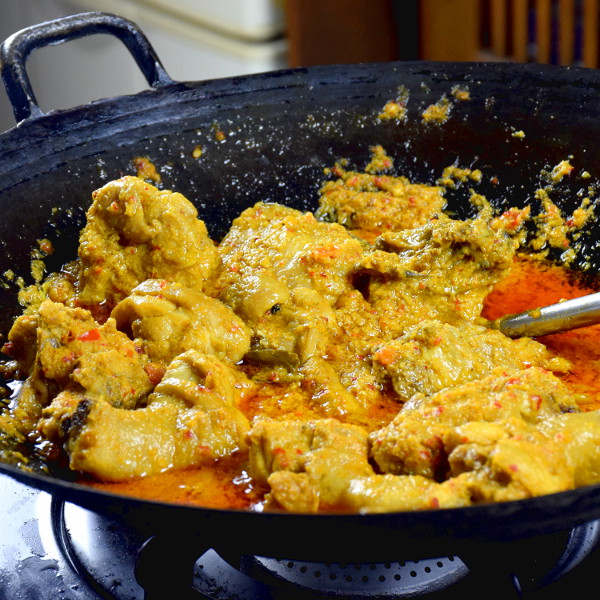
Step 3 – Prepare the Ingredients for the Curry Paste
Blend the following ingredients to create the curry paste:
- Cut onions into large pieces and peel the garlic cloves. Red onions are preferred, but yellow onions can also be used.
- Remove the outer layer of lemongrass, discard the green parts, and use only the white bulb, cutting it into short sections.
- Finely dice or slice the galangal to ensure it blends smoothly.
- Soak the dried chilies in hot water for about 15 minutes until soft, then cut them into short pieces and remove the seeds from the fresh chilies.
- Slice the turmeric (wear gloves to avoid staining).
- Add the belacan and candlenuts to the blender. Candlenuts can be added whole as they blend easily.
Blend these ingredients until you achieve a smooth paste. If not blended well, small pieces of galangal and lemongrass may remain in the gravy after cooking.
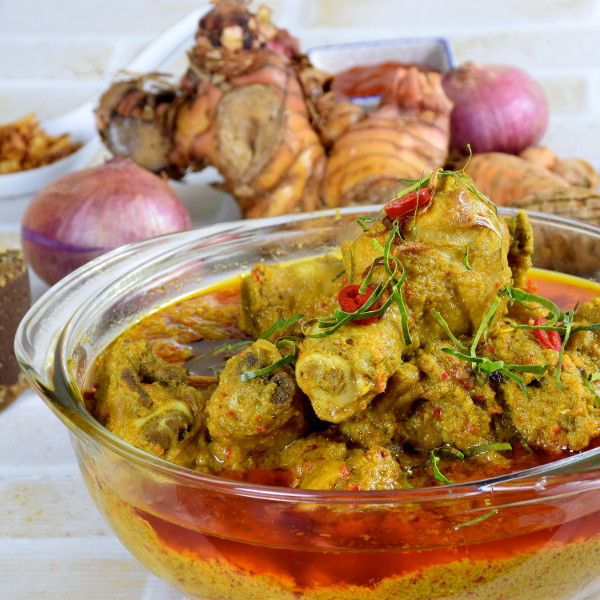
Step 4 – Put It All Together and Cook
The cooking process is straightforward once all ingredients are prepared:
- Sauté the curry paste in vegetable oil over medium heat until aromatic, about 5 to 10 minutes, until the red chili oil separates from the paste.
- Add coconut milk to the sautéed curry paste, creating a thin gravy.
- Incorporate the kaffir lime leaves, tamarind juice, and palm sugar.
- Add the chicken to the curry mixture and cook for 30 minutes until fully cooked. Add water if the mixture becomes too dry.
- Serve garnished with sliced red chilies, lime juice, and thin strips of kaffir lime leaves. This dish pairs wonderfully with white rice or roti jala.
Tips to Make the Best Kapitan Chicken
- Turmeric can stain hands and plasticware; use disposable gloves and ceramic or glass containers for marinating.
- Kaffir lime leaves are irreplaceable for their aroma; omit them if unavailable.
- Fresh turmeric is preferable, but if using ground turmeric for marination, adjust the quantity accordingly.
- For a healthier option, substitute half of the coconut milk with plain yogurt, though the traditional recipe uses only coconut milk.
- To cut kaffir lime leaves into fine strips, stack several leaves, roll them tightly, and slice.
- You can also bash the lemongrass and stew it with the chicken for added flavor, removing it before serving.
Kapitan chicken stands apart from Malay and Indian curries due to its lower chili content and minimal use of common Indian curry herbs like cumin, fenugreek, and fennel. Instead, it features a small amount of belacan and turmeric, complemented by abundant coconut milk.
The Legend of Kapitan Chicken
The name Kapitan Chicken (Captain’s Chicken) originates from an intriguing legend from the British colonial era in Malaysia.
According to the tale, a Chinese chef aboard a British ship was eager to learn local cuisine. One day, he observed a Malay woman preparing a stewed chicken dish with an exotic flavor. He requested her recipe, and she graciously shared it with him.
Back in his kitchen, he realized that the original recipe might be too spicy for the British captain and crew. He modified it by reducing the spiciness and incorporating some Chinese ingredients. The captain and his guests praised his milder version of the dish.
When the captain inquired about the dish’s name, the chef hesitated and replied, “Ayam Kapitan,” meaning captain’s chicken in Malay. The name has remained associated with this dish among locals to this day.

